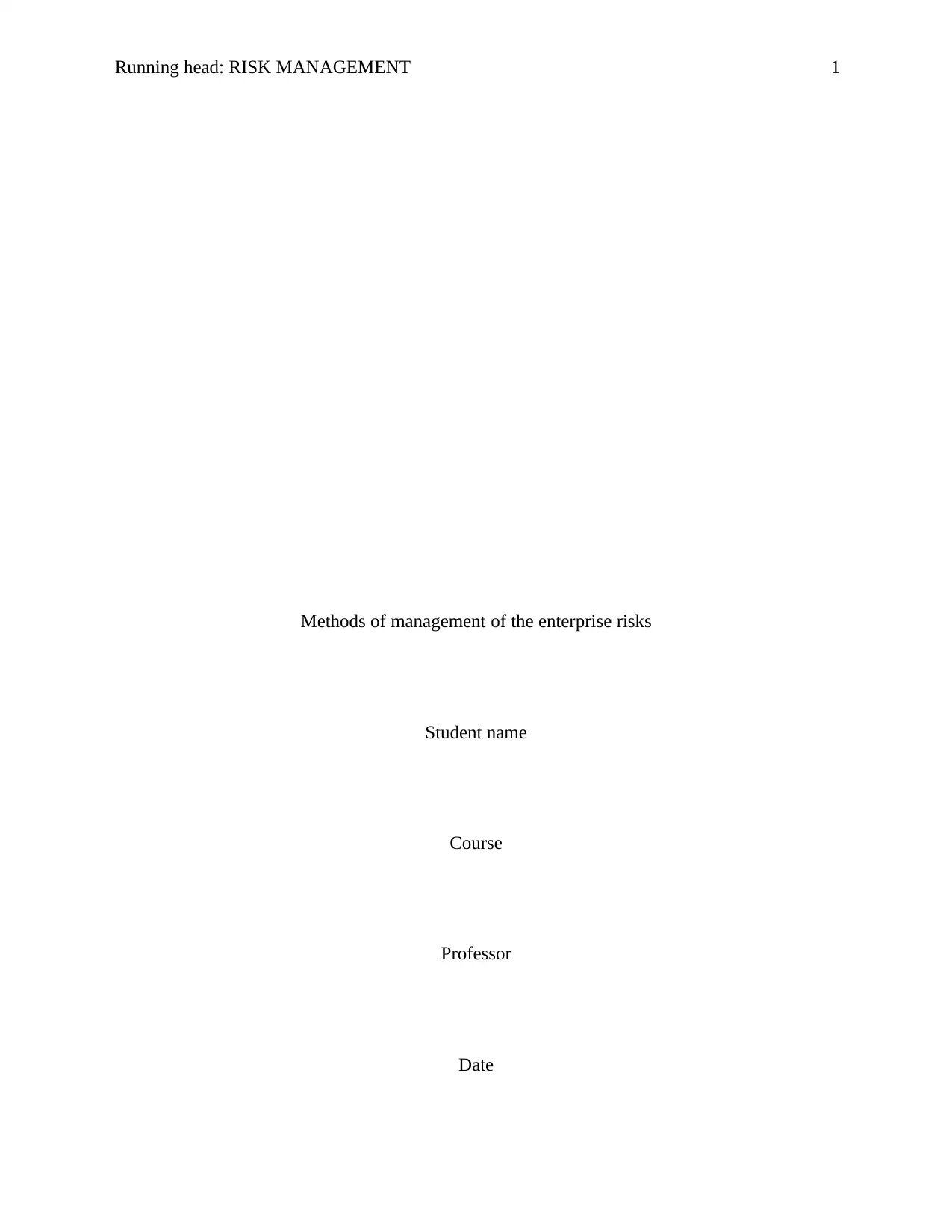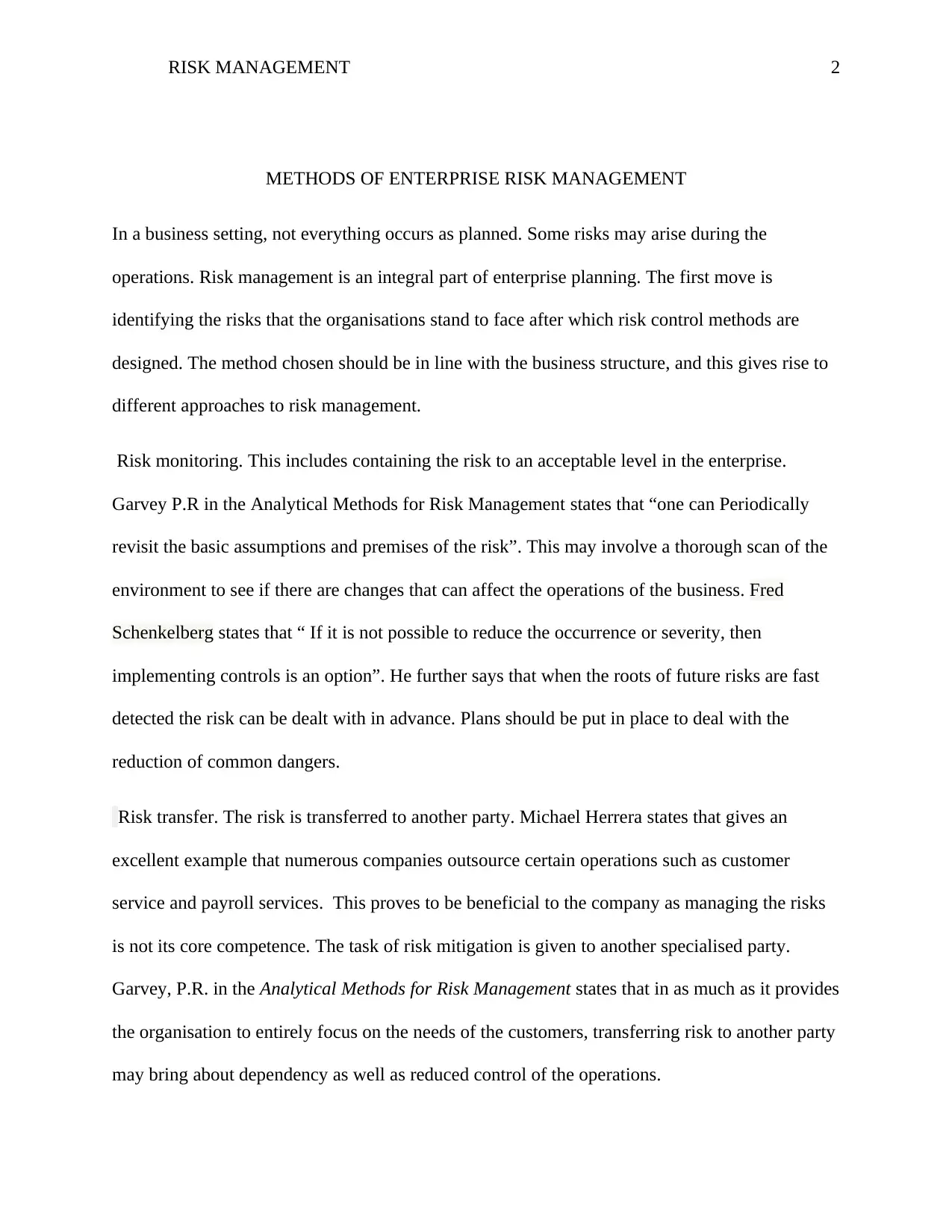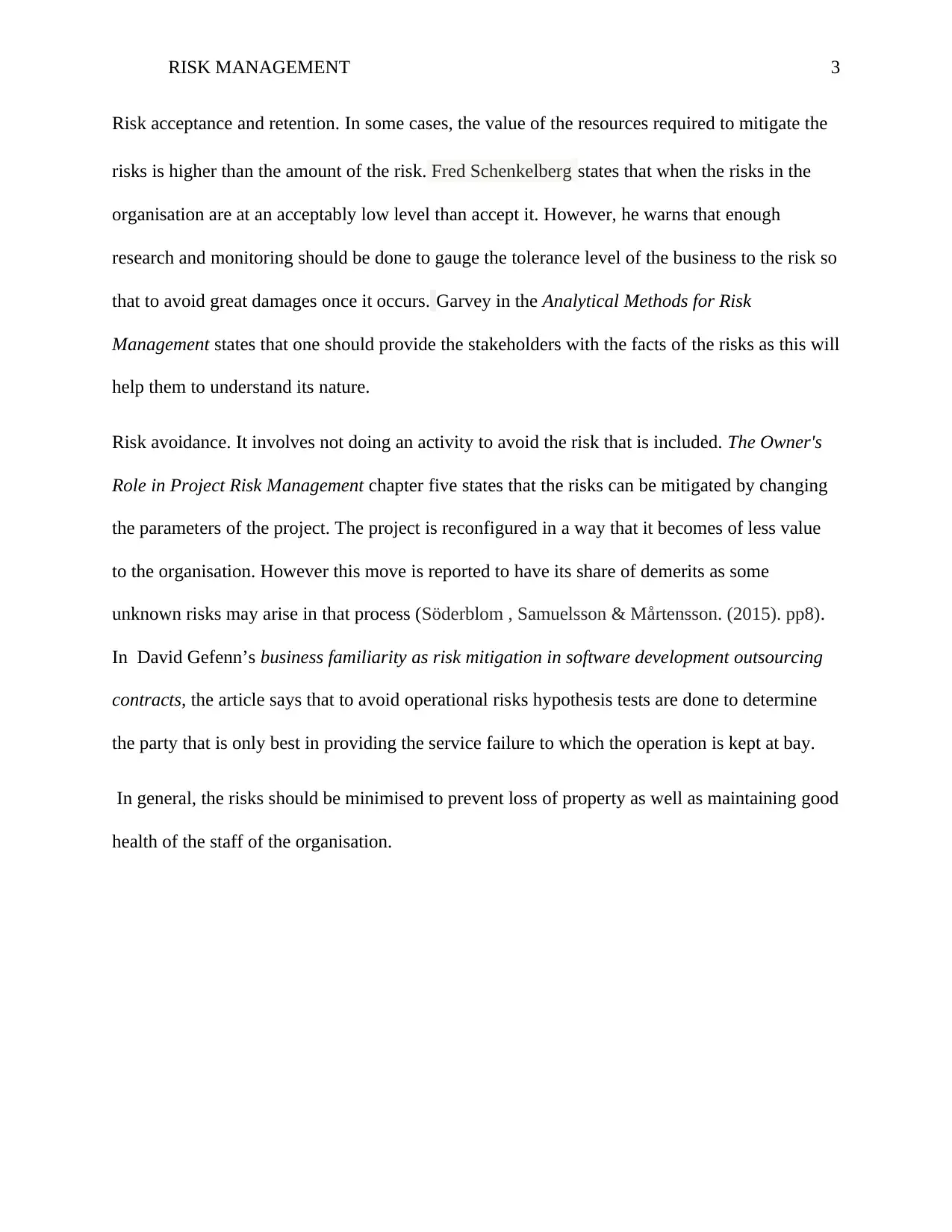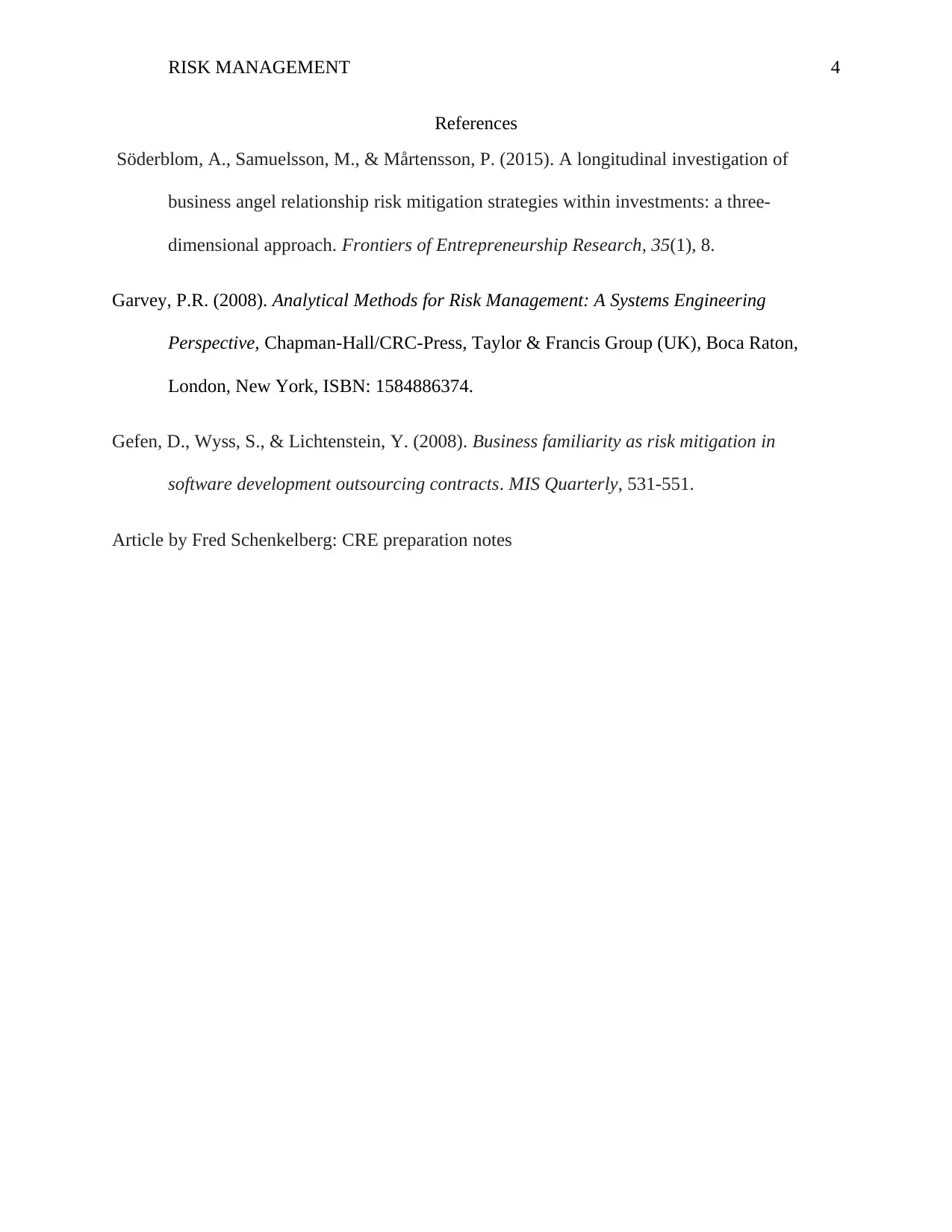Report on Methods of Enterprise Risk Management, Course Name
VerifiedAdded on 2023/06/03
|4
|753
|64
Report
AI Summary
This report provides an overview of enterprise risk management, emphasizing its importance in business planning. It explores various methods, including risk monitoring, which involves regular reassessment of assumptions and environmental scans to detect potential changes. The report also covers risk transfer, such as outsourcing certain operations to specialized parties, and risk acceptance/retention, where risks are accepted if mitigation costs outweigh potential damages, along with the need for stakeholder awareness. Finally, it discusses risk avoidance, which involves altering project parameters to eliminate specific risks. The report references several sources to support its analysis, highlighting the significance of minimizing risks to protect assets and maintain employee well-being.
1 out of 4










![[object Object]](/_next/static/media/star-bottom.7253800d.svg)